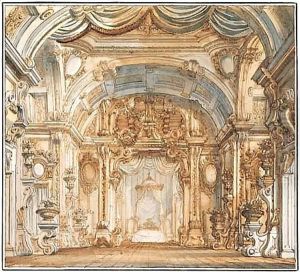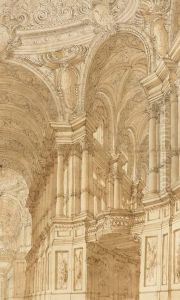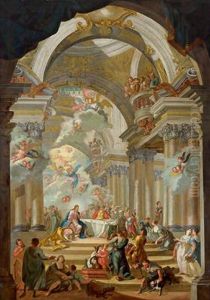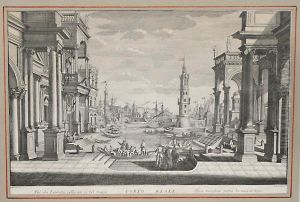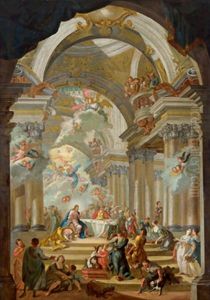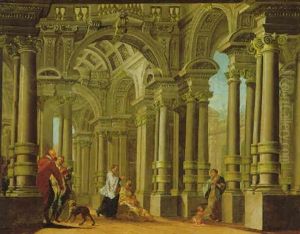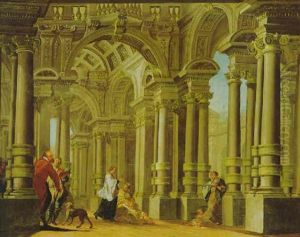Antonio Galli Bibiena Paintings
Antonio Galli Bibiena, born in Parma, Italy, in 1697, was a distinguished member of the prolific Galli da Bibiena family, an Italian dynasty famous for their contributions to baroque architecture, stage design, and the decorative arts. The family's influence spread throughout Europe in the 17th and 18th centuries, with Antonio being one of the most prominent figures, especially noted for his work in theatrical scenery and architecture. He was the son of Ferdinando Galli Bibiena, the founder of the family's artistic dynasty, and under his father's guidance, Antonio quickly developed his skills in the family's trade, blending architecture, painting, and stage design into a unique artistic vision that would become highly sought after across the European continent.
Antonio Galli Bibiena's career was marked by his innovative approach to stage design, creating dramatic and complex scenes that utilized perspectival illusion and architectural fantasies to captivate audiences. His work was characterized by a deep understanding of space and an ability to manipulate perspective to enhance the theatrical experience, making him a pioneer in his field. He served in various prestigious positions across Europe, including appointments at courts in Vienna, where he worked for the Holy Roman Emperor Charles VI, and in Berlin, under Frederick the Great of Prussia. These positions allowed him to leave a lasting impact on the theatrical and architectural landscape of Europe, influencing both the development of baroque theater design and the evolution of rococo architectural elements.
Beyond his contributions to theater and architecture, Antonio Galli Bibiena was also a talented draftsman and educator, authoring several influential treatises on stage design and perspective. His works were widely disseminated, further spreading his innovative ideas and solidifying his legacy as a key figure in the development of European art and design in the 18th century. Despite the broad scope of his influence, Antonio's work remained deeply rooted in the baroque tradition, embodying its dynamism, emotional depth, and ornamental richness, yet he also pushed the boundaries of this style, incorporating elements of the emerging rococo movement, which favored lighter, more whimsical themes.
Antonio Galli Bibiena passed away in 1774, leaving behind a rich legacy that continued through his descendants and students. His contributions to stage design, architecture, and the visual arts not only reflected the grandeur and complexity of baroque and rococo aesthetics but also represented a significant chapter in the history of European art, demonstrating the enduring impact of the Galli Bibiena family on the cultural landscape of the era.
